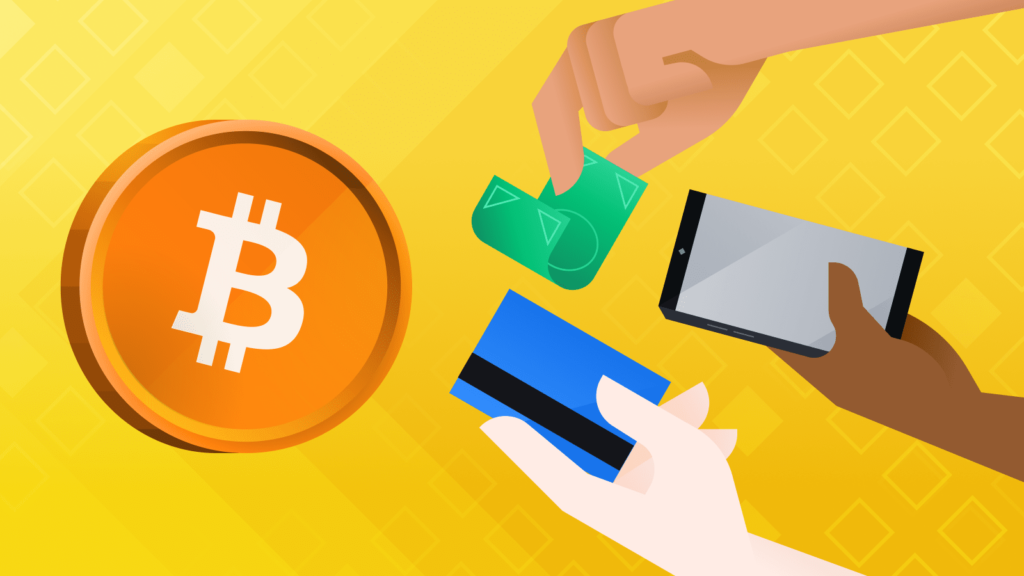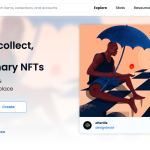
Steps to Buy Bitcoin
1. Digital Wallet
In order to conduct transactions on the bitcoin network, participants need to run a program called a “wallet.” Bitcoins are not technically “coins” in the traditional sense, so it only seems right that a bitcoin wallet would not actually be a wallet. Your Bitcoin wallet that you will be assigned by an app or service provider is essentially an alpha-numeric string of random letters and numbers — but you can think of this Bitcoin “address” as your “bank account number.”
Bitcoin balances are maintained using public and private “keys,” which are the names for these long strings of numbers and letters linked through the mathematical encryption algorithm used to create them.
The public key represents your “bank account number”, and is the location where transactions are deposited to and withdrawn from. This is also the key that appears on the blockchain ledger as a user’s digital signature, not unlike a username on a social media newsfeed. The private key is the password required to buy, sell, and trade the bitcoin in a wallet. A private key should be a guarded secret and only used to authorize bitcoin transmissions. Some users protect their private keys by encrypting a wallet with a strong password and, in some cases, by choosing the cold storage option; that is, storing the wallet offline.
Note that there are several different ways to maintain a Bitcoin wallet and the private keys associated with them. A hosted wallet service, such as Coinbase or Blockchain.info, will provide you with web or app access and act as custodian of your private keys. If you lose your account log-in information or password, you can use that service to reset your password and get back in. However, with such a wallet you do not actually control your private keys, and may not even be able to access them in some cases. If you download a standalone wallet on your PC or mobile device, you will fully control your private keys, but if you forget your password or lose your private keys, your Bitcoins are lost forever. Thus, there is a trade-off between privacy & security and being able to recover your coins if you are forgetful.
A bitcoin wallet should not be used for long-term storage. Bitcoin or its key should be stored in a secure wallet, such as one that uses a multi-signature facility for security.
2. Personal Documents
The U.S. Securities and Exchange Commission requires users to verify their identities when registering for digital wallets as part of its Anti-Money Laundering Policy. In order to buy and sell bitcoin, you will need to verify your identity using several personal documents including your driver’s license and Social Security number (SSN).
3. Secure Internet Connection
If you choose to trade bitcoin online, use discretion about when and where you access your digital wallet. Trading bitcoin on an insecure or public wifi network is not recommended and may make you more susceptible to attacks from hackers.
4. Bank Account, Debit Card, or Credit Card
Once you have a bitcoin wallet, you can use a traditional payment method such as a credit card, bank transfer (ACH), or debit card to buy bitcoins on a bitcoin exchange.7 The bitcoins are then transferred to your wallet. The availability of the above payment methods is subject to the area of jurisdiction and exchange chosen. Below is a screenshot of the bitcoin interface on Coinbase showing how to buy and sell bitcoin and also Bitcoin Cash, Ethereum, and Litecoin, which are other popular virtual currencies. The user clicks the “Buy” tab to buy digital currency and the “Sell” tab to sell digital currency. You select which currency you are buying or selling and which payment method (your bank account or credit card) you want to use.
Depending upon the exchange, there may be benefits and disadvantages to paying with cash, credit or debit card, or bank account transfer. For instance, while credit and debit cards are among the most user-friendly methods of payment, they tend to require identification and may also impose higher fees than other methods. Bank transfers, on the other hand, typically have low fees, but they may take longer than other payment methods.8
5. Bitcoin Exchange
After you’ve set up your wallet with a payment method, you’ll need a place to actually buy bitcoin. Users can buy bitcoin and other cryptocurrencies from online marketplaces called “exchanges,” similar to the platforms that traders use to buy stock. Exchanges connect you directly to the bitcoin marketplace, where you can exchange traditional currencies for bitcoin.7
Remember that the bitcoin exchange and the bitcoin wallet are not the same things. Bitcoin exchanges are similar to foreign exchange markets. The exchanges are digital platforms where Bitcoin is exchanged for fiat currency—for example, bitcoin (BTC) for U.S. dollars (USD). While exchanges offer wallet capabilities to users, it is not their primary business. Since wallets must be secure, exchanges do not encourage storing large amounts of bitcoin or for long periods. Therefore, it is advisable to transfer your bitcoins to a secure wallet. Because security must be your top priority when choosing a bitcoin wallet, opt for one with a multi-signature facility.
There are many well-established exchanges that provide one-stop solutions with high security standards and reporting, but due diligence should be exercised when choosing a bitcoin exchange or wallet. Besides Coinbase, other popular exchanges include Coinmama, CEX.IO and Gemini.
How to Buy Bitcoin
Alternate Ways of Buying Bitcoin
While an exchange like Coinbase remains one of the most popular ways of purchasing bitcoin, it is not the only method. Below are some additional processes bitcoin owners utilize.
Bitcoin ATMs
Bitcoin ATMs act like in-person bitcoin exchanges. Individuals can insert cash into the machine and use it to purchase bitcoin that is then transferred to a secure digital wallet. Bitcoin ATMs have become increasingly popular in recent years; Coin ATM Radar can help to track down the closest machines.
P2P Exchanges
Unlike decentralized exchanges, which match up buyers and sellers anonymously and facilitate all aspects of the transaction, there are some peer-to-peer (P2P) exchange services which provide a more direct connection between users.Local Bitcoins is an example of such an exchange. After creating an account, users can post requests to buy or sell bitcoin, including information about payment methods and price. Users then browse through listings of buy and sell offers, choosing those trade partners with whom they wish to transact.
Local Bitcoins facilitates some of the aspects of the trade. While P2P exchanges do not offer the same anonymity as decentralized exchanges, they allow users the opportunity to shop around for the best deal. Many of these exchanges also provide ratings systems so that users have a way to evaluate potential trade partners before transacting.







